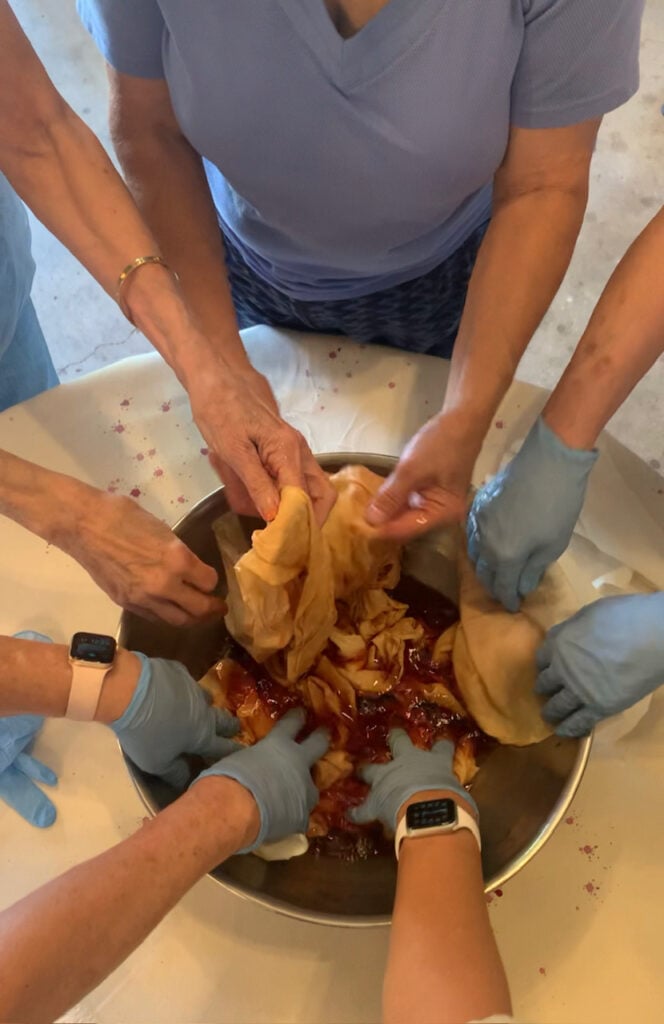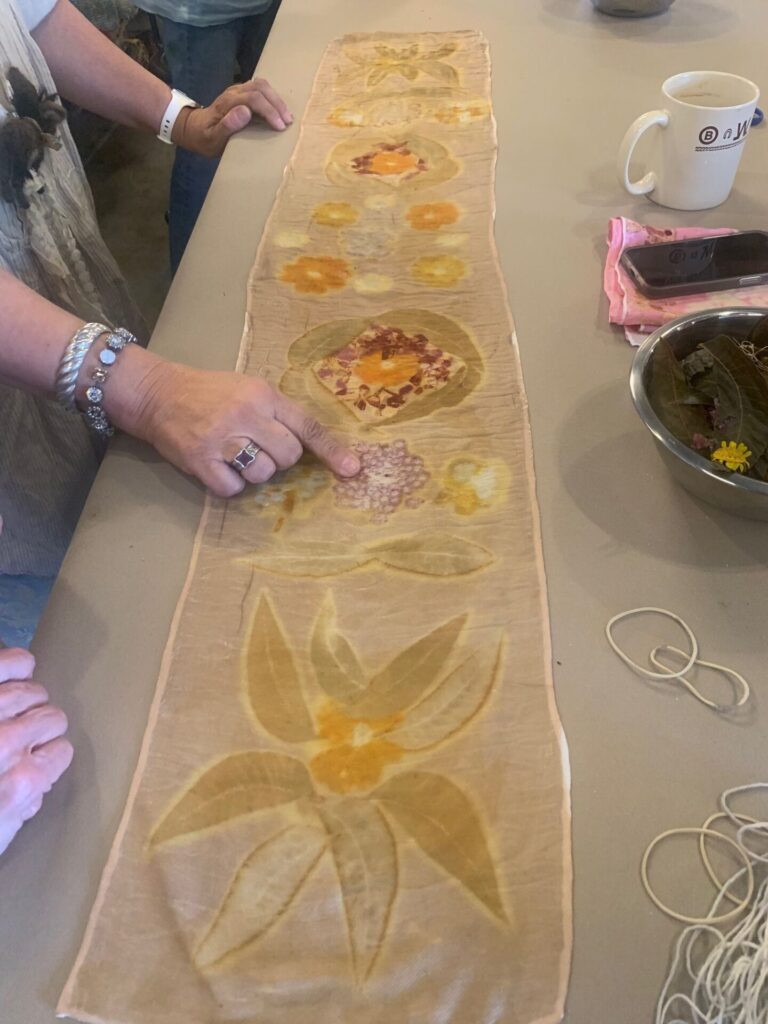
We get lots of emails from customers about challenges with dyeing and needing Botanical Colors’ President Kathy Hattori’s help. Why not share the learning so we can all benefit? From our inboxes to you, it’s simple: You Asked, Kathy Answered. Email questions@botanicalcolors with your plea for help!
Thanks to Amy Tucker Studio for this week’s questions!
YOU ASKED: I was instructing an eco printing workshop this weekend, and I was using logwood for the carrier blankets and I had a strange occurrence. I attached some photos to show what it looked like and what happened.
I extracted the color from the chips the way I normally do and had a large dye bath. When we soaked the cloths in the dye bath pulled out, mostly a yellow from the dye. As we steamed them, I could see that the color was not really turning purple overall and I allowed a little more time in case, it was an issue of heat and pressure.
When we un-bundled the dye rolls, the color was a yellow orange brown color, which was quite beautiful, but not at all what we expected.

The logwood was all done on a silk and wool combination scarf, which was scoured and mordanted with alum and cream of tartar. The steam was super high, boiling for the entire duration, which was about 55 minutes.
I could see that there were a little touches of the dark purple just the tiniest amount around the edge of some of the leaves, and in some places had very small creases in a few small creases. I had some cotton shop rags as a barrier between the water and the steam area of the pot, and some fugitive dye leaked out from the carrier cloths onto those cloths. That fugitive dye was dark purple.

I thought you might be able to offer some insight into what happened or what could be the possible cause of this. Any thoughts are much appreciated.
KATHY ANSWERED: Thanks for the detailed question. The pH modifier that changed purple logwood to brown-yellow logwood is because you mordanted with alum and cream of tartar. CoT is acidic and shifted the logwood from its normal purple (which you observed on the carrier cloth) and inhibited the purple development.
If you had mordanted with alum only, the purple shade should have developed on the silk and wool fabric.
I have a very general rule of thumb about the effect of acids or bases on natural dyes. It is: acids (vinegar, cream of tartar, citric acid) will make many colors lighter (less saturated), brighter, and “yellower”, including inhibiting colors like reds and purples. Alkalis (or bases like soda ash, calcium carbonate, calcium hydroxide, wood ash) will make many colors richer (appear slightly more saturated), and “redder” or “purpler”.
So that means if I am getting a very wimpy color from something I’ve foraged and I know that the fabric is mordanted in straight alum (no CoT), I will add a pinch of calcium carbonate to see if the color blooms. If nothing happens, then I’ll try a pinch of soda ash. It’s not enough to radically change the pH of the dye bath and possibly affect the fiber, but it is enough to enhance the color extraction of the dyestuff.
I hope this is helpful.
Warm wishes,
Kathy
